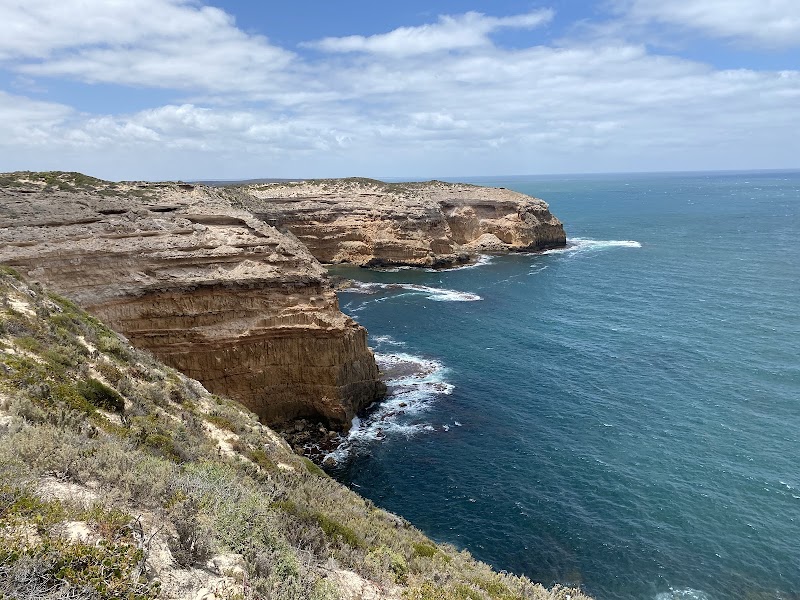
Victor Harbor Cycling Classic: Pedaling Through Mount Compass’s Rugged Beauty
Tackle the Victor Harbor Cycling Classic and immerse yourself in the rugged terrains of Mount Compass. Discover a challenging 70km race that blends scenic views, demanding climbs, and practical rider support — perfect for cyclists ready to test their limits while enjoying South Australia’s coastal hinterland.
Hydrate Strategically
Carry ample water and take advantage of aid stations at intervals around 15-20 km to stay energized and avoid heat stress.
Choose Grip-Friendly Tires
Opt for tires that handle both paved and light gravel surfaces to maintain control on descents and loose patches.
Start Early to Avoid Heat
Begin the ride early in the morning to benefit from cooler temperatures and softer sun angles for better riding comfort.
Prepare for Variable Elevation
Train for sustained climbs and technical descents to navigate the approximately 900 meters of altitude gain smoothly.
Victor Harbor Cycling Classic: Pedaling Through Mount Compass’s Rugged Beauty
The Victor Harbor Cycling Classic in Mount Compass, South Australia, offers a dynamic test of endurance and skill across the rolling landscapes of the Fleurieu Peninsula. This challenging race stretches over a mixed terrain of asphalt and gravel, demanding riders master long climbs and sharp descents that the region carves fiercely, never giving an inch without a pushback. Stretching roughly 70 kilometers with an elevation gain around 900 meters, the course invites cyclists of varying levels to engage with an environment that both dares and rewards.
Starting near Mount Compass township, the route unfolds with a practical rhythm — steady ascents along forest-fringed roads where towering eucalyptus trees lean overhead, their leaves brushing sounds of the wind like soft applause. As you pedal out, farmland patches and sweeping vistas open across hills and distant coastlines, offering moments to breathe in the highland’s crisp air and soak up sunlit rays warming the rolling pastures.
The terrain isn’t just a background; it’s an active participant in the race’s story. Steeper climbs test fitness and mental grit, while the descents urge caution as gravel patches flirt with tire grip, reminding riders that this landscape is fiercely itself. Hydration stations positioned around 15 to 20-kilometer points ensure essentials stay within reach, but riders should prepare with lightweight bottles and efficient hydration packs as South Australian sun can push temperatures above 25°C even in shoulder seasons.
Timing your ride matters. Early starts avoid the peak midday heat and allow more comfortable pacing. Footwear should balance stiffness for power transfer with enough flexibility to handle grit and occasional loose surfaces. Consider durable cycling shoes with reinforced soles and toe protection.
The Victor Harbor Cycling Classic is more than a route; it’s a challenge balanced with access and support, catering to cycling enthusiasts who appreciate adventurous terrain without sacrificing practical logistics. Riders get a tangible connection to Mount Compass’s wild character — a road cycling experience that demands respect and rewards effort in equal measure.
Nearby Trips
All Adventures
Boat Charters
Water Activities
Adventures near Mount Compass, South Australia
Discover the unique and memorable adventures that make Mount Compass, South Australia special.
Frequently Asked Questions
What type of terrain does the Victor Harbor Cycling Classic cover?
The course navigates a mix of sealed roads and gravel patches across rolling hills. Riders should be comfortable on asphalt and variable surfaces, with climbs reaching up to 900 meters in total elevation.
Are there support stations along the race route?
Yes, aid stations are positioned approximately every 15-20 kilometers offering water, electrolytes, and basic first aid. Riders are encouraged to bring personal hydration to supplement these stops.
Is the race suitable for novice cyclists?
While the route welcomes all skill levels, the 70km distance combined with significant elevation gain makes it more suitable for those with moderate to advanced conditioning and basic technical skills.
What local wildlife might I encounter along the course?
Cyclists often spot kangaroos grazing near roadside edges at dawn and dusk, along with native birds such as kookaburras and rosellas fluttering through the gum trees.
Are there any notable viewpoints or landmarks on the route?
Several vantage points offer sweeping views across the Fleurieu Peninsula’s hills and towards Encounter Bay. Notably, the climb near Brukunga Hill provides a quiet overlook with clear coastal vistas.
What environmental considerations should I keep in mind while cycling here?
Respecting the fragile local flora and fauna is key. Riders should stay on designated roads and paths, avoid littering, and minimize noise to protect native species and preserve the area's natural integrity.
Recommended Gear
Hydration Pack
Keeps fluids accessible during long stretches between aid stations; vital in hotter months to prevent dehydration.
Cycling Shoes with Stiff Soles
Provides efficient power transfer while protecting feet from rocky terrain and gravel impacts.
Lightweight Waterproof Jacket
Protects against sudden spring rains and wind chills without adding significant weight.
Cycling Gloves
Improves grip and protects hands during descents and rough patches, enhancing control and comfort.
Local Insights
Hidden Gems
- "Brukunga Hill viewpoint for quiet panoramic views"
- "Small forest patches harboring native wildflowers in spring"
Wildlife
- "Eastern Grey Kangaroo"
- "Laughing Kookaburra"
- "Rosella Parrots"
History
"Mount Compass has agricultural roots dating back to the 19th century with the area once a hub for sheep grazing. The cycling classic weaves through landscapes shaped by European settlers and indigenous Kaurna heritage."
